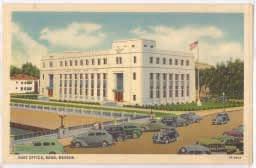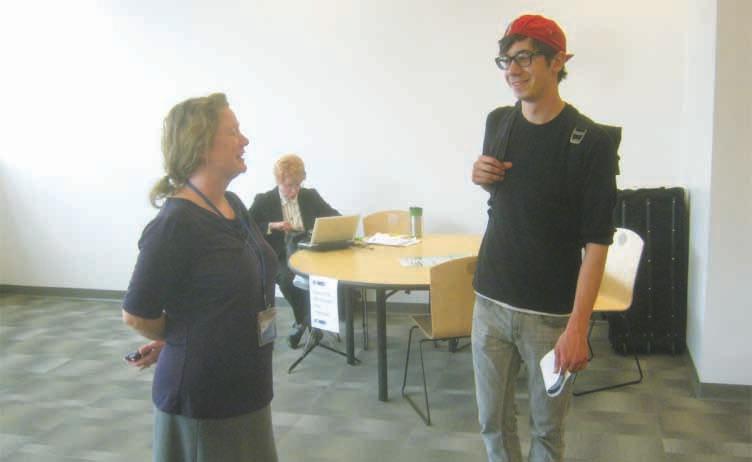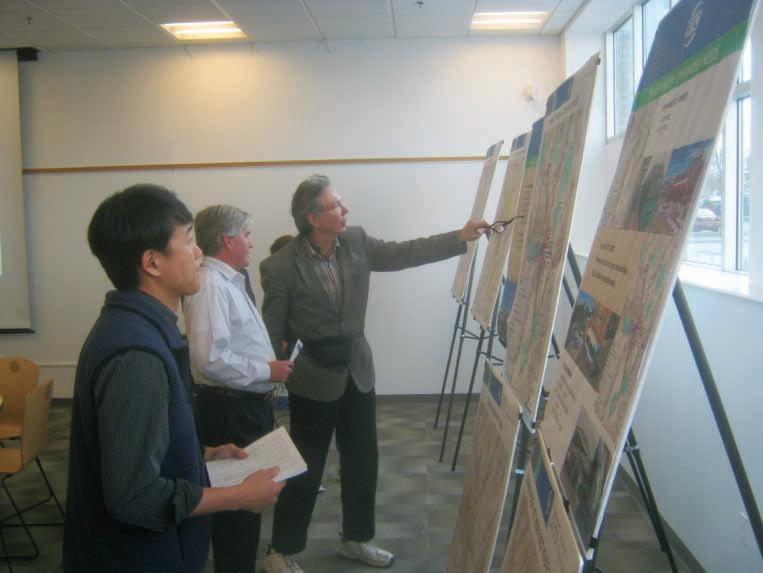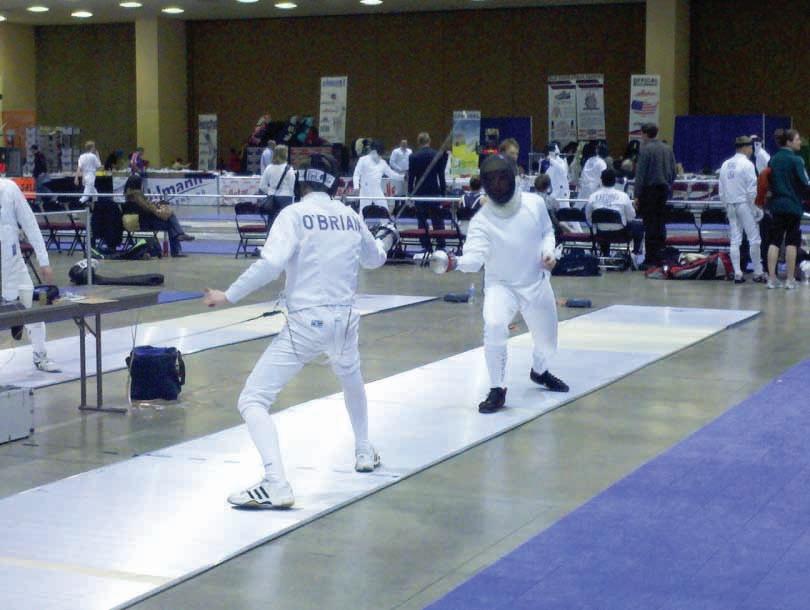
8 minute read
News
from March 21, 2013
The wider picture
Figures compiled by political analyst Rhodes Cook and released last week show that of 33 U.S. senators elected last November, Dean Heller of Nevada won with the smallest margin.
Advertisement
The latest issue of the Rhodes Cook Letter reports that the range of vote percentages gathered among the 23 Democrats, two independents, and eight Republicans elected runs from the 75.7 percent of the vote collected by Wyoming Republican John Barrasso to Heller’s 45.9. No other senator finished lower than Heller, though, like Heller, some of them had multiple opponents to drain off votes.
Heller faced Democrat Shelley Berkley, Independent American David Vanderbeek, and the “None of these candidates” ballot option.
Cook also notes Nevada was the only state to elect a GOP senator while voting for Barack Obama.
The nosier picture
On March 12, Google admitted to invading the privacy of people with its “street level” feature, introduced in 2007. The admission came as part of a settlement with 38 states, Nevada included.
The feature shows 360-degree photographs from street level. At the time that the views now posted online were taken by Google vehicles, Google also gathered passwords, email and other personal information from unknowing computer users through unsecured wireless networks.
Only a token fine of $7 million was imposed against Google, a company now worth more than $2.5 billion whose chair just took a bonus of $6 million. Google agreed to destroy the data, though no information was released on how that destruction will be confirmed. In addition, Google agreed to adopt new privacy policies.
Nevada will receive $113,531 as part of the settlement. The money will go into the state general fund.
Post offices at risk
Historic preservationists around the nation are becoming concerned at the sell-off taking place of post office buildings around the nation.
“When these post offices close, preservationists say, important public buildings become private preserves as they are refurbished into commercial spaces like high-end retail stores,” the New York Times reported last week. “Though many of the buildings’ exteriors are protected by local landmark laws, many of the interiors are 1940s POST CARD not and developers tend to make changes like renovating lobbies.”
Currently, there are 11 post office buildings on the market. In one case, a Virginia post office was torn down to make way for a Walgreen’s store.
Many such structures were built during the New Deal period, creating jobs and leaving behind notable structures. The Reno downtown post office was built before that, when Herbert Hoover was still president. It is an art deco design—specifically, Zig Zag Moderne—by noted Reno architect Frederick DeLongchamps.
The Reno building was acquired by the city, which promptly sold it to developer Bernie Carter’s company, 50 S. Virginia LLC. Carter plans a high-end retail future for the structure and has said he intends to preserve the structure and has solicited old photos and information on the structure.
The structure was assessed at $5.1 million, but the Postal Service said its worth was closer to $2.2 million because of seismic retrofit needs and other factors. The city acquired it for $1.25 million and sold it to Carter for the same amount.

Moving around the valley
What local transportation will look like for 20 years nears resolution
Ray Eliot is a VISTA volunteer who works with the Reno Bike Project and By is quick to say he does not speak Dennis Myers for the project. But biking is still the reason he attended an open house held by the Regional Transportation Commission on its new draft of a transportation plan for the whole area. “It’s an important thing to be involved in,” Eliot said. “Obviously, I’m interested in whether there will be more planning around cycling.”
Ray Eliot Bicyclist
to read the proposed area-wide transportation plan, see http:// yourwashoertp.com/ draft-2035-rtp.
The open house was held at the Terry Lee Wells Nevada Discovery Museum. The final plan will be in effect until 2035. The last day to submit comments on the draft plan is April 22.
Saying transportation plan to members of the public is likely to make their eyes glaze over. The RTC’s Amy Cummings, asked how she would explain the plan to someone quickly, described it this way: “I would say that it sets the framework for the transportation investments we’re going to be making over the next 20 years, and it’s looking at roadways, transit, and bicycle and pedestrian facilities, with safety as one of the main criteria.”
She acknowledges the problem in getting people to pay attention.
“It’s always a challenge to … get people interested in something that’s very long term,” she said. “It’s a little bit easier to get people interested in a project that’s in their neighborhood and, you know, there’s a specific design that’s available for review. … We do recognize that a lot of people don’t have time to come to meetings in person but we want to make sure that it’s available on line also.”
Eliot said he attended to find out whether the plan contains an increase in emphasis on mode share—a bureaucratic term for the use of multiple forms of transportation. He said he thinks there are obstacles to multiple uses that officialdom can help break down. The obstacles, he said, are “mostly cultural.”
“Reno is a place that was developed around the automobile,” he said. “People don’t necessarily think you can get from place to place by bikes, buses.” (For more on the transportation and bicycles, see Green, page 11.)
Mark Miller is a businessperson who owns properties around the valley. He thinks what RTC is doing is a good idea. “We need better transportation access,” he said. “I used to live in Spanish Springs and boy, when you got on Disc Drive, you could have real problems.”
He also said the agency did a good job of informing people along affected routes of public meetings on the planning process. He said he got started in the transportation plan process early on because he received a notice from RTC of a workshop, and when he attended it he discovered that the plan as then drafted would take out some apartments that adjoined a convenience store/gas station he owns, which would remove an access curb he needs. “That could put me out of business,” he said. The early workshop gave him a chance to voice his concerns to people who could do something about it, and he wanted to follow up to see whether those concerns had been satisfied.
He had hoped to find out at the open house whether the problem had been addressed in the draft. But he learned that the event was being held more to give exposure to broad overview of the plan, not to what he calls “nuts and bolts.” He raised the issue and was told he would be contacted later with specific information on his concern.
At an open house on the draft transportation plan, bicylist Ray Eliot chatted with RTC planning director Amy Cummings.
Chicken and egg
One person looking over the large maps on display commented that little had improved in bus service to the Spanish Springs Valley, which is devoid of routes. But he also said he understood the financial limitations on RTC. “I think they do a very good job, given the restraints they’re under.”
Cummings said a route on the Pyramid Highway to the Galleria is being considered, but that does not include routes up into the neighborhoods on either side of the highway.
Getting people out of their cars and into buses is another challenge.
“One thing that we always want to keep in mind is having choices available for people,” Cummings said. “Obviously there are some areas that aren’t served … by bus routes, and that was one of the bigger questions we had [at the open house] was to extend services to those areas. But certainly an education campaign is important. We’re working with the schools,
Residents examine maps that illustrate transportation options around the valley.

and that’s something that we would like to move forward with, is an education component for the schools, so that people learn now to ride the bus because that’s one of the other things that’s come up to us at some of these meetings is that people just aren’t familiar with the system and they don’t know how to start.”
It there’s already a bus route through a neighborhood, residents are more likely to use it. But a route is less likely to happen if there is not evidence of interest in riding the bus. Two of the least served areas are the wealthy southwest, where getting people out of their cars is an enormous challenge, and the Spanish Springs Valley. Ω

Amy Cummings regional transportation Commission

Ready, fence



ABBACADABRA – THE ULTIMATE ABBA TRIBUTE
SATURDAY, MARCH 23
MOONWALKER - THE REFLECTION OF MICHAEL
SATURDAY, MARCH 30
ELVIN BISHOP
SATURDAY, APRIL 6
Tickets available at Ticketmaster.com or SouthShoreRoom.com LOCAL NATIVES
SATURDAY, APRIL 13
Hunter O’Brian of Reno’s High Desert Fencing Alliance parries with David Hesse of Le Club Touché at the North American Cup, which was held in Reno, March 15-18. Earlier this month, two club members of High Desert Fencing, Joaquin Tobar and Eileen Grench, won gold medals in the Saber Fencing event at the Central American Games in Costa Rica.

See box office for details and age restrictions. Shows subject to change or cancellation. Must be 21 or older to gamble. Know When To Stop Before You Start.® Gambling Problem? Call 1-800-522-4700. ©2013, Caesars License Company, LLC.











